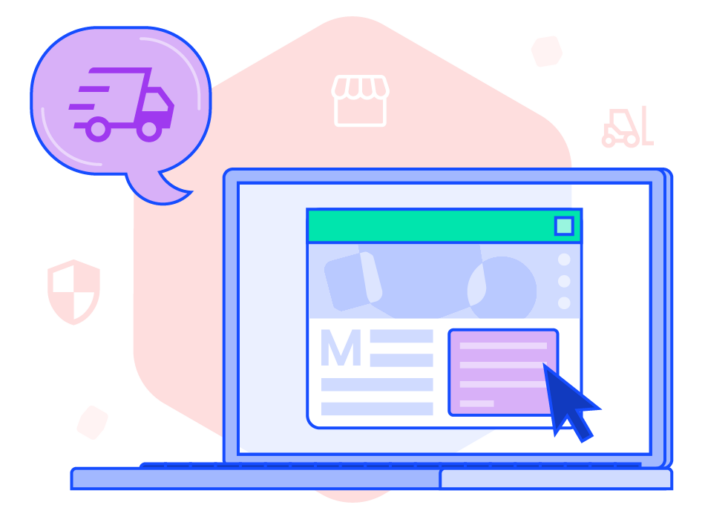We’ve been working with a PR firm for a while now and we get a lot of questions about how to do PR. While this isn’t a comprehensive guide, it’s a good starting point for getting your startup in the press.
Goals
Before you do anything, you should define your goals for PR. Are you looking for more users or customers? Help with recruiting? Investor interest? Each of these have different PR strategies that work best, so it’s important to clearly outline what you hope to achieve from PR.
If your goal is users, for a consumer app or site, a great place to start is Hacker News or reddit. These are combed by early adopters and if there’s promise for your product, it will likely take off there.
Another great place to launch apps is on blogs. I don’t follow these much anymore, but sites like AppGratis or other app-a-day sites used to be good places for distribution to early adopters.
If your goal is enterprise customers, Hacker News and reddit can also be great channels, especially if selling to developers or tech savvy business buyers. Beyond that, industry publications can be a good way to target potential customers. The great thing about these is that since there’s lower readership — they’re more niche — they’re easier to get in touch with them.
Whether it’s an attempt to gain users, customers, or investors, these all likely start at the same place: reaching out to journalists or bloggers.
Getting Started
Now that you know your goals, start reading relevant media. An important piece of effective PR is knowing a publication’s work as well as its style. This will give you an idea how companies are presented so you can better tailor your own pitch for success. It will also expose you to other companies that are getting press and what’s being written about them.
For example, TechCrunch is great for fundraising, big product updates, and major milestones. Knowing this means I won’t try to pitch them on featuring my app or site with no traction or funding. Fortunately, there are sites that are great for this, TechCrunch just isn’t one of them.
By doing this you’ll be able to create a list or relevant publications. From there, start keeping track of reporters or bloggers that cover relevant startups or ideas.
Once you’ve got a list or reporters, you’re almost ready. One important tip is to start small. Want to be on the NYT someday? Don’t start there. PR is very much like sales, you want to gradually build up to bigger publications. Going straight after the top of the market isn’t going to work, and could harm your chances with them in the future.
Start on industry blogs or sites. They will not only be easier to reach, but they will also provide great practice to get you ready for the bigger publications.
Although it doesn’t sound important, practice is crucial for success in PR. Those early, smaller interviews are great for improving your pitch as well as minimizing the impact of any mistakes you may make. I’ll provide more practice tips below, but here’s a great example of a PR mistake I made.
Early on in our PR efforts I was speaking to a blog you’ve probably never heard of. We hadn’t yet announced fundraising, but I mentioned on the call that we had raised money. Within an hour this post was live. A post on an unknown tech blog was not exactly what we had in mind for our fundraising announcement.
Fortunately, no one noticed and it was a free lesson about what not to say to reporters. More tips on that below.
Storytelling/Message Development
Before you reach out, you need to know what story you’re telling. The quality of your story will determine whether or not you capture a reporter’s interest or end up on the cutting room floor.
- Who are we trying to reach, and how does that influence where or how we tell our story?
- Who is the “hero” of the story?
- Why is what you’re doing great/What differentiates you from the competition?
- Why should a reporter care/What trends does this story build upon?
- Does your story have a beginning, middle and end?
Ask yourself questions like these and try to distill what it is that’s exciting about your product or company. Without strong storytelling, it’s unlikely you’ll get past the first step of getting interest from a reporter.
How to Reach Out
I recommend starting with the most junior reporter or blogger at the publication you’re interested in. Also, only hit one reporter at a time from each publication.
Additionally, it’s important to note that this outreach isn’t about writing a piece, it’s about connecting with them and establishing a rapport. What we’re going for is to learn about the reporter and teach them about your company. An informed and interested reporter will lead to much better coverage long term.
This also means you should reach out far in advance of wanting press. If you think you’ll want to do some PR in a few months, reach out now.
Here’s the method I use today and have had excellent results:
Subject: Great Article About {TOPIC}! // Doesn’t have to be that, but something that shows you read their work and are interested in talking with them.
Hi {NAME},
I really enjoyed your article about {TOPIC}. I have a lot of experience with {TOPIC} because my company does {TOPIC}. // The point here is to compliment and show you’re knowledgeable on the subject.
I’m the CEO and Founder of {COMPANY}, which is {DESCRIPTION}. We {TRACTION}. Our investors include {INVESTORS} // This is basically your elevator pitch. Who you are, what you do, and why they should talk to you. In tech PR, big name investors is interesting, so include their names.
Have time for a quick call? // Can also offer coffee, if they’re local. Just so long as it’s a question.
Best,
{YOUR NAME}
By complimenting, you’re showing you’re familiar with their work and aren’t just looking for a quick piece of press. And by showing you’re knowledgeable on the topic, you’re offering to be a valuable source in future work.
Here’s an actual email that worked, with name and topic redacted:
Subject: Love Your {SHIPPING COMPANY} Article
Hi {NAME},
Great piece on {SHIPPING COMPANY} hiking holiday rates! It’s hard to find good coverage of the carriers so I love reading your pieces.
I’m the Founder and CEO of EasyPost, which is a shipping API for all the major carriers. We ship millions of packages a month for companies like Shapeways, Teespring, Groupon, and others. Our investors include Peter Thiel, Ashton Kutcher, Y Combinator, Google Ventures, and more.
We’ve seen a big shift on the customer side as well for the holidays. Instead of relying on the standard delivery dates, they’re using the actual cutoffs provided by the carriers. We also see customers setting up pop up distribution centers for just the holidays.
I’d love to talk if you have time for a quick call.
Best, J
The reporter responded the next day and we had a call.
Timing is an important aspect as well, since the most popular time for press releases and product launches, at least within tech, is Tuesday. Given that, you’ll have better luck emailing them off-peak. Try later in the week and in the afternoon.
Rinse and Repeat
If the reporter didn’t respond, ping them again after one week with something like this:
Hi {NAME},
I just wanted to follow up on my earlier email. Let me know if you have time for a quick call.
Best,
{YOUR NAME}
Also, when you send that one, send a note off to the next reporter on your list from that publication. Remember, just like with sales, it’s a numbers game. Make a list of potential contacts, email them one by one, and follow up.
It Worked, Now What?
Once the reporter responds, I like to do something that salespeople call mirroring and matching. If they respond in an hour, I respond an hour later. The point with this is to match their interest and not to seem desperate.
After that, respond with something agreeable in terms of scheduling. Let them know you’re flexible, but toss out a distinct time. Something like this:
Hi {NAME},
Thanks for the note. I’m free Monday and Tuesday. How’s Tuesday at 3pm ET?
Best,
{YOUR NAME}
Also, I usually don’t propose the day of. You’re important, you’ve got things to do. You’re also not desperate to get on the phone. That is, unless they propose it, then go for it.
What Not to Say
The first rule of PR is do not say anything you don’t want printed.
The second rule of PR is DO NOT SAY ANYTHING YOU DON’T WANT PRINTED.
It’s that important. In my example above, I showed how important this is.
But what about ‘off the record’? Roger Ailes says you should never say anything off the record. If you’ve known the reporter for years and have a rapport, that’s one thing. But in the case of a reporter you’re just meeting, keep it on the record by not saying anything you don’t want printed.
Additionally, don’t ask for coverage. The point of this outreach is to meet the reporter and establish a rapport. Coverage comes later.
What to Say
Ask questions. I know, I know, you’re reaching out to talk about your company. But this isn’t about you, it’s about the reporter. So ask them questions. Have a list of these before the call.
What do you think of {TOPIC}?
Or better yet:
I really enjoyed your reporting on {TOPIC}, what do you think of {SUB-TOPIC}?
A good reporter will typically guide the conversation with their questions, and the more the merrier. But having your own questions is a good way to get to know them, show an interest, and learn other areas where you might provide value to them.
For some of their bigger questions about product or traction, you should shoot for a few glowing, 30 second bits about the following:
Problem: what it is you’re solving
Customer: who is the target customer, or actual customer if you have them
Traction: what have you done to date
Market: how the market is
BIG: how your idea gets to be big
Team: how great your team is
This is the same strategy we used for our successful Y Combinator Interview and it works for almost any type of interview or selling scenario.
You don’t have to do all six, preferably not, but 2-4 of them is good. They can often be said in response to questions the reporter may have. (ie How big is this market? How big of a problem is this?)
Practice
These tips are helpful, but the important thing to do is to practice. Write up a list of questions they could ask and run through your answers.
If you’re going to be doing face-to-face interviews, you might as well practice with the camera on your phone or laptop. This will show you how you look to a reporter.
Also, if you want some tips from an expert, Roger Ailes has a great book called You Are the Message about how to effectively present yourself.
How to Actually Get Press
Now that you’ve established rapports with a handful of reporters, you’re in a much better position to be written about. Often, if you establish a strong rapport, the reporter will ask about any upcoming announcements you might have. That’s when you can mention upcoming product announcements or milestones. If that’s not the case, don’t worry, you can still pitch them on your news.
As a general rule, the bigger the publication the longer it takes to be written about. For smaller or tech-focused publications, sometimes one call is all it takes. For bigger ones, it can take a few months and several contacts.
Ideally, you’ve made contact with these reporters in advance of wanting press, and so some time has passed since you first contacted them. Say, at least 3-4 weeks.
Figure out what you want to publicize. Is it the fact you’re growing at an incredible rate? Have you just launched a new product? Recently raised some money? For tech PR, these are all standard things to announce.
Reach out to your reporter of choice, only one, with something like this:
Hi {NAME},
Great chatting with you {DATE/TIME PERIOD}. I hope your trip to Maui was great! // The point is something relevant to them here that lets them know you were paying attention.
We’re launching {PRODUCT}, it’s a {DESCRIPTION}. We think it is {REASON IT’S GOING TO BE BIG}. // Tell them what you’re announcing, why it’s important, and why it’s going to be big (so they will look good writing about it).
I’d love to give you an exclusive on this announcement if you’re interested. Do you have time for a quick call?
Best,
{YOUR NAME}
Give them at least a day or two. If they don’t respond, move on to the next one, but never email two at the same time offering an exclusive.
Scaling Your PR
Once you’re ready to scale your PR efforts, hiring a PR shop can really help. PR shops are great for once you’re doing or wanting to do more press than you can manage. They’re also great if you’re just starting and don’t want to do all this work, or don’t know how.
The approach we used is to look for companies that have PR you admire. Are they always doing cool press launches? Do they seem to have an in with important reporters? Reach out to them directly and ask who they use for PR. As long as they’re not a competitor, the company will likely tell you because it sends business to their PR shop, which makes them look good.
And since you’ve been practicing and getting articles of your own, you’ll have a good idea how to pitch your story and what you’re looking for. You’ll also be able to jump right in with your own existing contacts.



